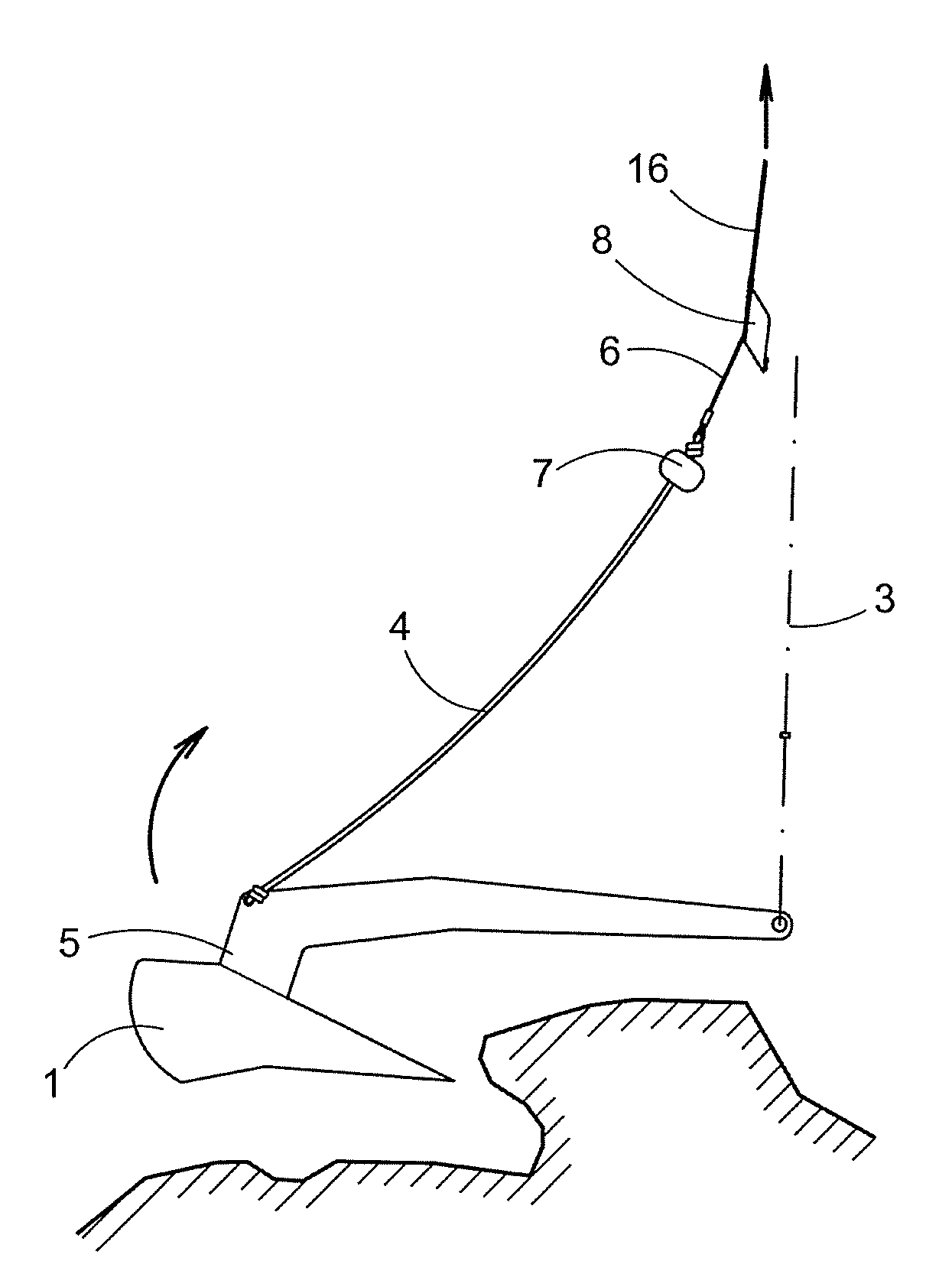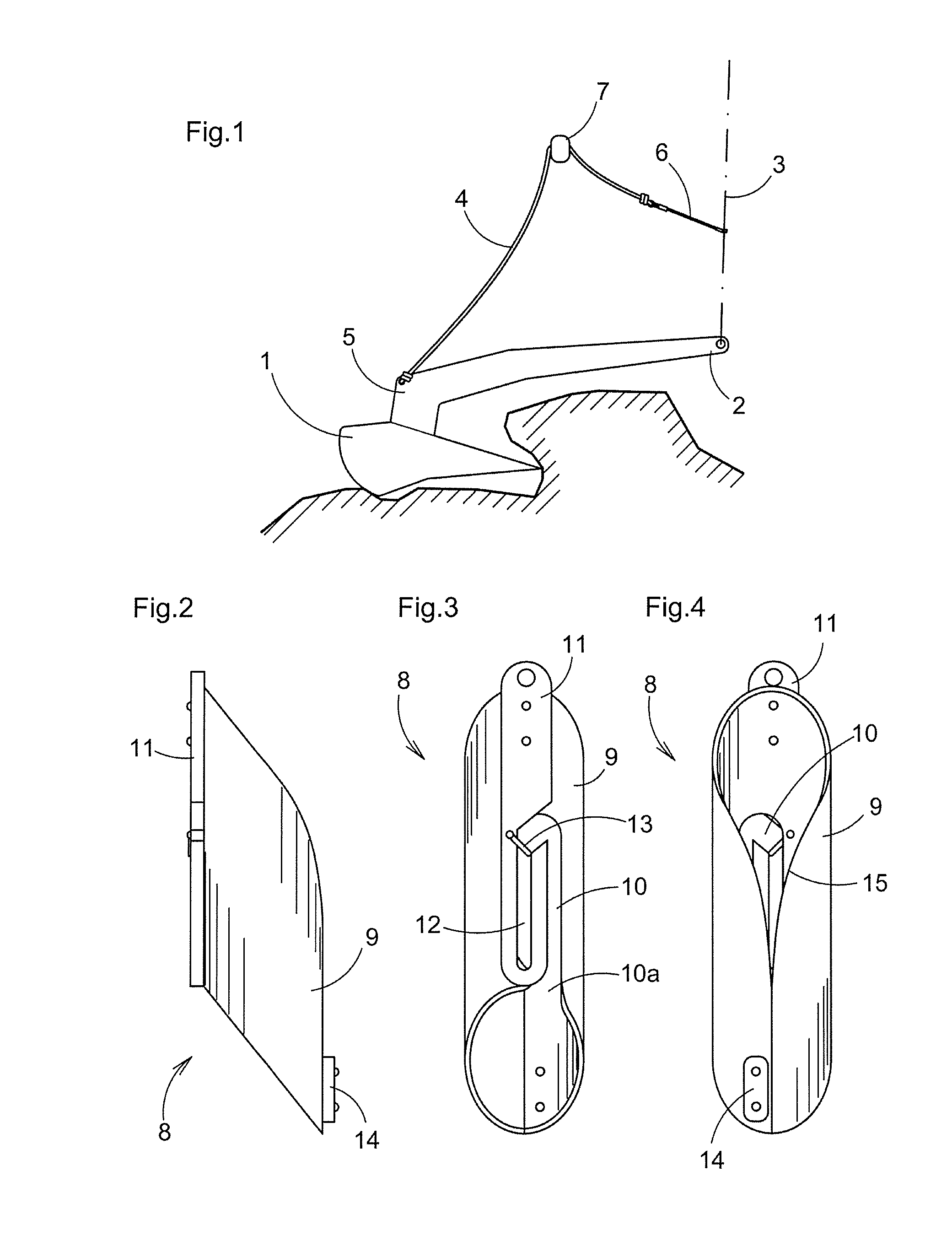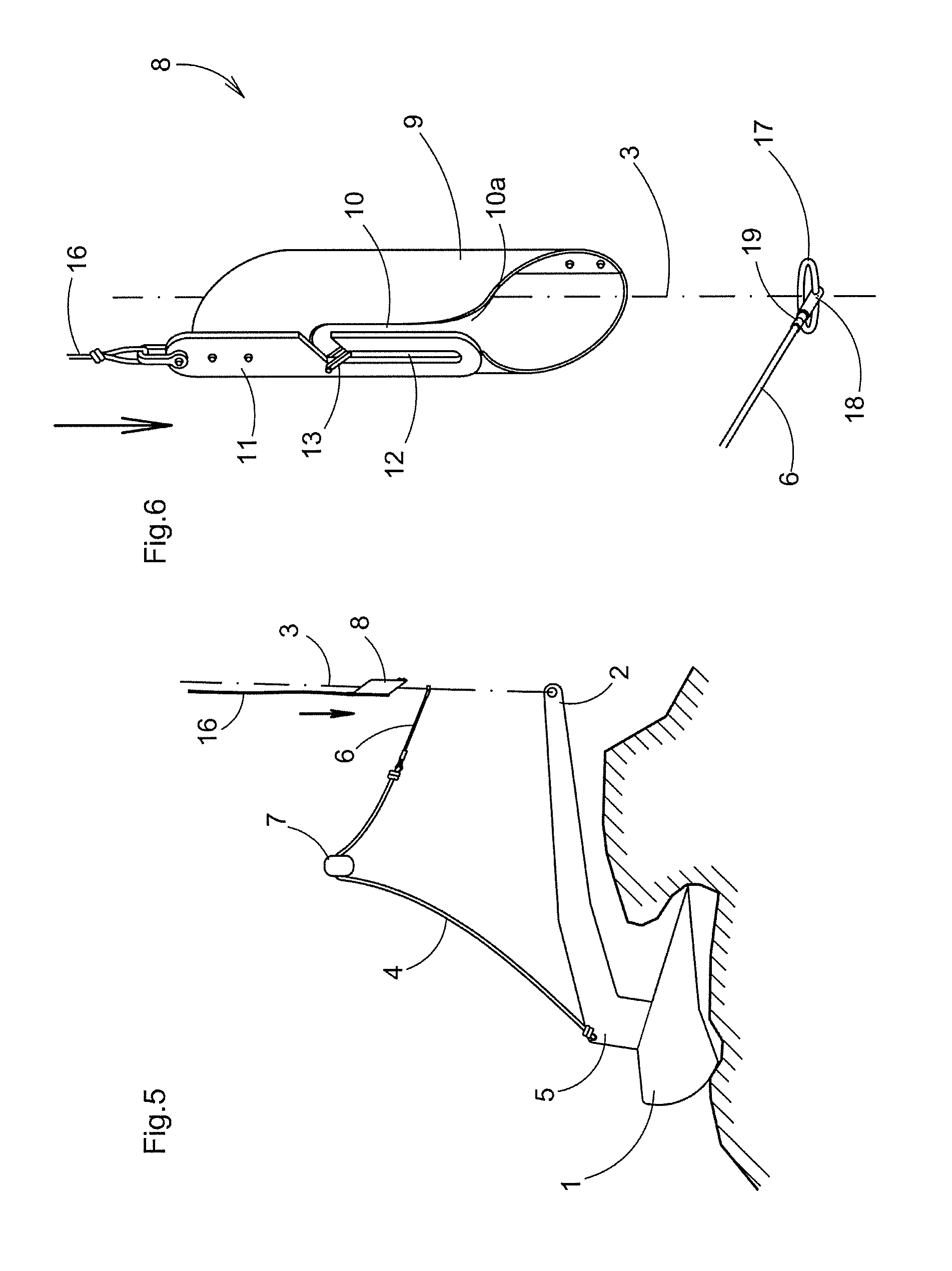Anchor Retrieval Device
a technology for retrieving devices and anchors, which is applied to anchors, waterborne vessels, vessel parts, etc., can solve the problems of difficult use, complicated manoeuvre of weighing anchors, and remains stranded or trapped, and achieves the effect of convenient us
- Summary
- Abstract
- Description
- Claims
- Application Information
AI Technical Summary
Benefits of technology
Problems solved by technology
Method used
Image
Examples
Embodiment Construction
[0031]In FIG. 1, an anchor 1 that is snagged in a relief of the bottom of the sea, is shown. The anchor 1 is connected at the free end 2 of its shank to a chain 3 that is connected by its top end to a vessel (not shown). In the situation described, the anchor 1 cannot be weighed by pulling the chain 3 upwards, since the arm or the palm of the anchor 1 is located under a projection on the bottom of the sea and it is not possible to move the anchor 1 so that its arm can exit from the space situated under said projection.
[0032]In an implementation, an anchor retrieval device comprises a rope 4 connected at one of its ends to the zone of the throat 5 of the anchor and connected at its other end to the chain 3, by means of a cable 6. Preferably, the connection point between the cable 6 and the chain 3 will be situated at least at 20 cm from the free end 2 of the shank of the anchor 1.
[0033]In the present embodiment, the anchor retrieval device includes a buoy 7 arranged between the two e...
PUM
 Login to View More
Login to View More Abstract
Description
Claims
Application Information
 Login to View More
Login to View More - R&D
- Intellectual Property
- Life Sciences
- Materials
- Tech Scout
- Unparalleled Data Quality
- Higher Quality Content
- 60% Fewer Hallucinations
Browse by: Latest US Patents, China's latest patents, Technical Efficacy Thesaurus, Application Domain, Technology Topic, Popular Technical Reports.
© 2025 PatSnap. All rights reserved.Legal|Privacy policy|Modern Slavery Act Transparency Statement|Sitemap|About US| Contact US: help@patsnap.com



